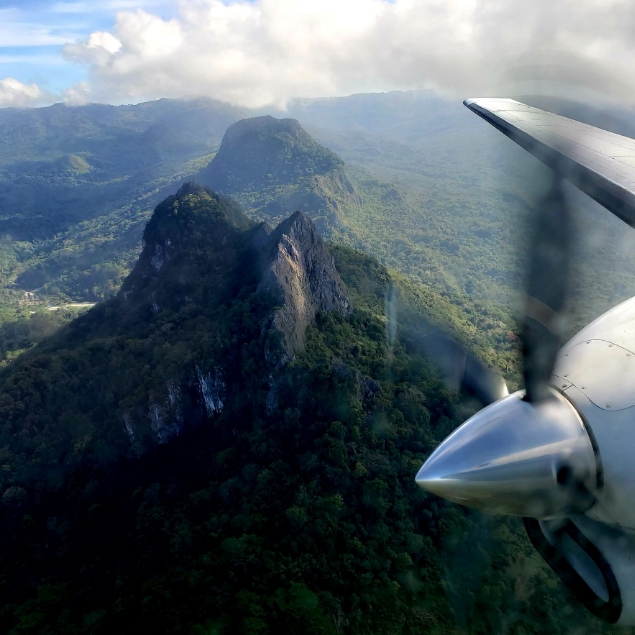Mapping Subsurface Geological Structures
Full Tensor Gravity Gradiometry for Geothermal Exploration
Geothermal energy is one of the most sustainable and reliable sources of renewable energy available today. Understanding the subsurface geological structures is crucial for identifying favorable geothermal sites, predicting resource productivity, and maximizing the efficiency of geothermal energy production. Bell Geospace FTG is your ultimate partner in this mission.
There are 4 common scenarios where measuring density using Bell Geospace FTG will add significant value
- Basin Geometry: Gravity Gradiometry highlights density contrasts within a basin caused by burial history and compaction of sediments.
- Fault Offsets: Gravity Gradiometry is effective for mapping offsets on faults due to the differing densities of the rock types.
- Intrusive Units: Igneous intrusives often have higher density than surrounding sediments.
- Detecting Alteration or Silicification: Alteration or silicification can be detected with density. They are a critical exploration indicator for geothermal resources because they not only can indicated the presence of a heat source but also enhance permeability, creates potential reservoirs, and leave distinct geological and geochemical markers.
At Bell Geospace, we believe that science can pave the way for a sustainable energy future. Geothermal energy plays a crucial role in reducing carbon emissions and combating climate change. By utilising FTG technology, you contribute to unlocking the full potential of geothermal resources and advancing the clean energy revolution.
The Advantages of FTG for Geothermal Exploration
- Unmatched Precision: FTG provides unmatched precision in mapping the subsurface density variations, aiding in identifying potential geothermal reservoirs and geological structures. With our high-resolution data, you can confidently make informed decisions on drilling targets and resource assessment.
- Comprehensive Subsurface Imaging: By capturing the full tensor of gravity gradients, FTG offers comprehensive imaging of subsurface structures, including fault systems, fractures, and fluid pathways. This detailed insight helps you understand the complex geology crucial to geothermal energy prospecting.
- Reduced Exploration Risk: Traditional exploration methods can be time-consuming and costly. Bell Geospace FTG accelerates the exploration process by rapidly surveying areas whilst offering complete coverage thus reducing exploration risk, and increasing the likelihood of successful geothermal discoveries.
- Environmental Responsibility and Community Sensitivity: We share your commitment to environmental responsibility. FTG is a non-invasive and quiet exploration technique that minimizes disturbance to the surrounding ecosystems and communities, aligning perfectly with sustainable geothermal development practices.
- Customized Solutions: Every geothermal exploration project is unique. Our technology and our survey plans are adaptable and can be tailored to your project's specific requirements, whether you're conducting regional surveys or detailed local investigations.
Take Advantage of a Free Assessment of the Viability of FTG for Your Geothermal Exploration Endeavor
Ready to find out if FTG could work for your Geothermal Exploration Project? Fill in our feasibility study quiz for a free 2D model of the expected results from an FTG survey for your area of interest, or get in touch with our team to discuss.
Gravity vs Gradiometry
Why Full Tensor Gravity Gradiometry is more applicable to Geothermal Exploration projects than Scalar Gravity Data.
FTG Geothermal Podcast
Identifying faults and using density contrasts in the near-surface where seismic acquisition is difficult to constrain.





